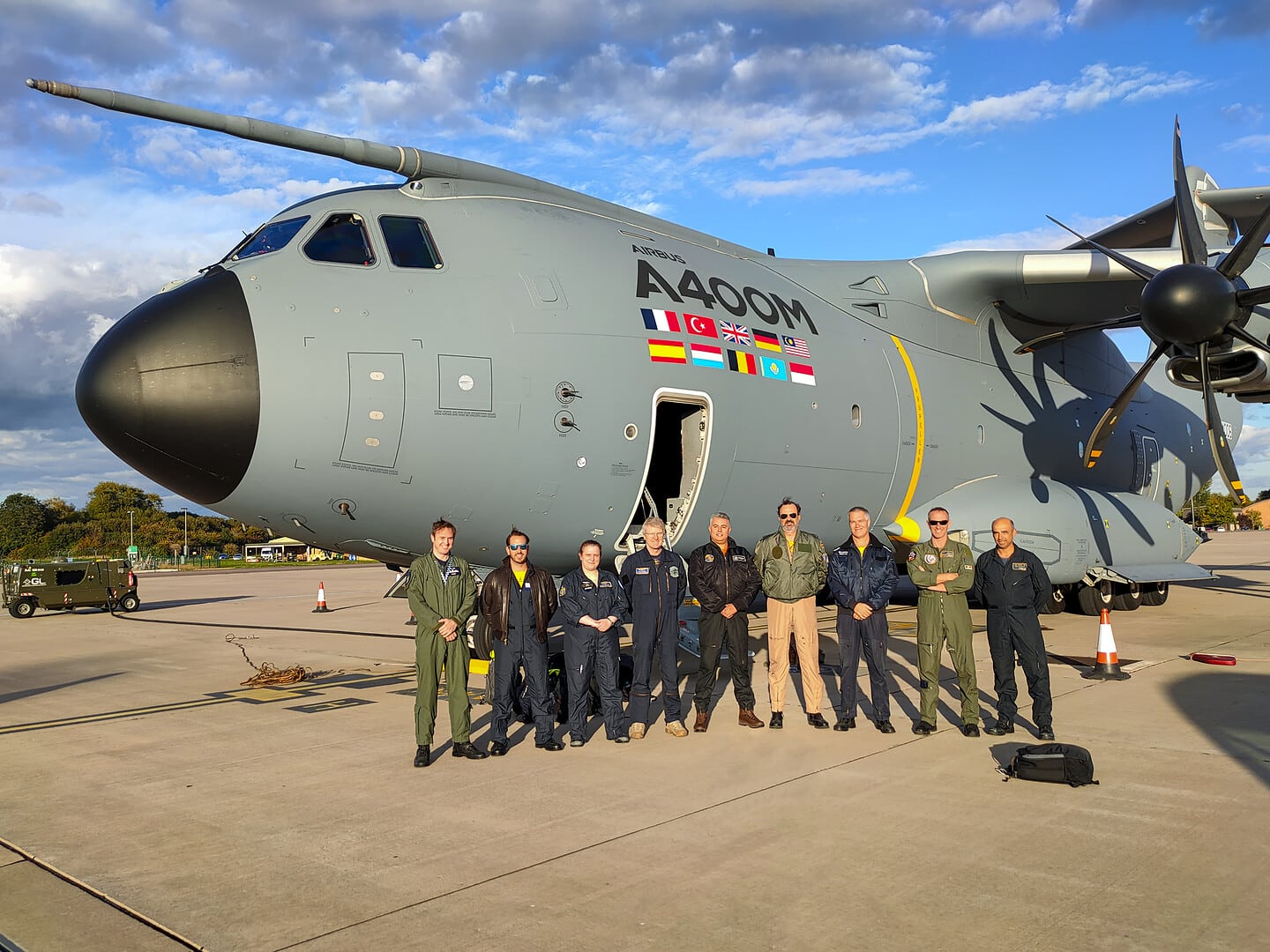Aerospace
Three missions, one aircraft: Airbus A400M shows its potential in the UK
The mission, which was carried out by the Airbus MSN6 prototype out of Royal Air Force Brize Norton

Airbus Defence and Space successfully completed a Crew Workload Assessment mission that was carried out in the UK as part of its commitment to the nations using the A400M under the Organization for Joint Armament Cooperation (OCCAR).
The mission, which was carried out by the Airbus MSN6 prototype out of Royal Air Force Brize Norton, had as its goal assessing the crew workload while carrying out the three tactically important functions of the A400M in a single flight: aerial delivery, low-level flight, and air-to-air refueling.
Secretive X-37B space plane lands after 2 years(Opens in a new browser tab)
This mission is particularly significant because it gives our customers clear assurance that the A400M is a mature, capable tactical asset, according to Simon Nicastro, Airbus’s manager of the A400M Flight & Integration Test Program.
The A400M exercised its muscles over the skies of the UK during this exercise, demonstrating its superiority in terms of speed and height. The initial part of the mission, which was above Scotland, was aerial refueling using the MSN6 as a receiver from an RAF A330 MRTT Voyager tanker. Although it was not tested in this mission, the aircraft’s built-in air-to-air refueling capability enables the aircraft to be quickly converted to become a tanker, a feature that is exclusive to the A400M. Rapidly changing operational conditions demanded rapid changing configurations.
China’s TP500 freight drone makes its maiden flight.(Opens in a new browser tab)
The MSN6 demonstrated its capabilities during the flight’s last phase by “playing” with both speed and height. Four loads of one tonne each were dropped over a controlled drop zone from the cargo hold during this phase. The A400M is perfect for dropping supplies from low altitude due to its low-speed characteristics. Once on the ground, it is built for extremely quick cargo unloading or loading without the need for specialized ground support equipment, reducing the aircraft’s susceptibility to hostile action.
Two pilots and one loadmaster, aided by two competent cargo crew, completed the entire operation. The Certification and Qualification Organization (CQO) crew authority were also present at the controls to ensure that the workload results were acceptable.
For such a mission, there is an experienced team working in perfect harmony with the customer. “This is the last complex campaign to coordinate and execute with our customers, involving a significant amount of Government Furnished Facilities (GFF) provided by the UK MoD and the Royal Air Force, including aerial delivery loads, a Voyager tanker, and several military zones.
For ongoing military operations, parachuting is still a crucial capability. The Royal Air Force’s A400M will be the aircraft that delivers the military’s parachuting capabilities in 2023, and recently, paratroopers of the RAF made the first low-level parachute descents from it.

Aerospace
Boeing Transfers Rocket Stage to NASA, Paving Way for Human Moon Mission

Boeing has achieved a significant milestone by providing NASA with the second core stage of the Space Launch System (SLS) rocket.
This crucial component, crafted at NASA’s Michoud Assembly Facility (MAF), is set to propel the Artemis II crew into lunar orbit, marking humanity’s return to deep space after a 50-year hiatus.
The monumental Boeing-built rocket stage, the largest element of the Artemis II mission, will embark on a journey aboard the Pegasus barge, traveling 900 miles to NASA’s Kennedy Space Center.
Comparison of two legendary aircraft B777x vs B747 aircraft:Click here
Upon arrival, it will be meticulously integrated with other essential Artemis II components, including the upper stage, solid rocket boosters, and NASA’s Orion spacecraft within the iconic Vehicle Assembly Building. This intricate integration process is a vital step toward the eagerly anticipated Artemis II launch, slated for 2025.
“Boeing-built products helped land humankind on the moon in 1969, and we’re proud to continue that legacy through the Artemis generation,” remarked Dave Dutcher, vice president and program manager for Boeing’s SLS program. “Together, with NASA and our industry partners and suppliers, we are building the world’s most capable rocket and paving the way to deep space through America’s rocket factory in New Orleans.”
NASA, Lockheed Martin Reveal X-59 Quiet Supersonic Aircraft:Click here
The delivery of Core Stage 2 marks a significant achievement in the evolution of the SLS rocket. Towering over 200 feet and powered by four RS-25 engines, this core stage, coupled with two solid-fueled booster rockets, will generate a staggering 8.8 million pounds of thrust. This immense power is crucial to launching Artemis II and future missions into the vast expanse of space.
The SLS rocket stands unparalleled in its capability to transport both crew and substantial cargo to the moon and beyond in a single launch. Its extraordinary capacity will facilitate the delivery of human-rated spacecraft, habitats, and scientific missions to destinations including the moon and Mars, ushering in a new era of space exploration.
-

 Travel1 week ago
Travel1 week agoAir India to Expand US Operations with Three New Routes After a Decade
-

 Travel2 weeks ago
Travel2 weeks agoWhy We Should Avoid These Stamps in a Passport
-

 Airlines1 month ago
Airlines1 month agoInvestigations Reveal Fake Chinese Titanium in Boeing and Airbus Jets
-

 Tech4 weeks ago
Tech4 weeks agoChina’s CATL Plans 1,800-Mile Electric Plane Launch by 2027
-

 Airport3 days ago
Airport3 days agoTop 10 Largest Airports in the World by Size
-

 Aerospace4 weeks ago
Aerospace4 weeks agoChina’s Fighter Jets Turn Wings into Autonomous Drones
-

 Airlines4 days ago
Airlines4 days agoAir India Rolls Out A350s for Delhi-New York JFK and Newark Routes
-

 Defence3 weeks ago
Defence3 weeks agoBoeing Enhances Chinook with New Engines and Block II Upgrades at $96 Million







